


Chapter 2
Rock The House
Nashville's Live R&B Scene
Club Del Morocco, Nashville, 1944. Photo by George Anderson. Courtesy of Theodore Acklen Jr.
In Nashville, live rhythm & blues shook the floorboards at venues that included everything from nightclub gambling joints to the otherwise staid War Memorial Auditorium. A major stop on the southern touring circuit, sometimes called the “chitlin circuit,” Nashville routinely drew the top R&B acts of the day while nurturing the city’s finest homegrown talent. Kept apart by the rigid dictates of segregation, young Black and white R&B fans endeavored to share their joy in the music, even as the civil rights movement placed ever greater pressure on Nashville to end those laws.
"I used to work in Nashville quite a bit when I was young. I used to come in and work because that's where I really made my $100 a week at. I didn't make $100 a week nowhere but there, really."
- Little Richard
JIM CROW SEATING
During the 1950s, R&B package shows often played large Nashville venues such as the Ryman Auditorium and the Sulphur Dell baseball stadium. These star galas drew R&B’s growing white fan base as well as Black fans, but “Jim Crow” segregation dictated the two races be kept apart inside the venues. Organized protests at Nashville lunch counters in 1960 would help bring the Jim Crow era to an end.
RYMAN RHYTHM
This program (left) is from a 1955 R&B extravaganza held at Nashville’s Ryman Auditorium. Black and white audience members were required to sit on separate floors of the building.
Courtesy of J. Aaron Brown.
Courtesy of J. Aaron Brown.
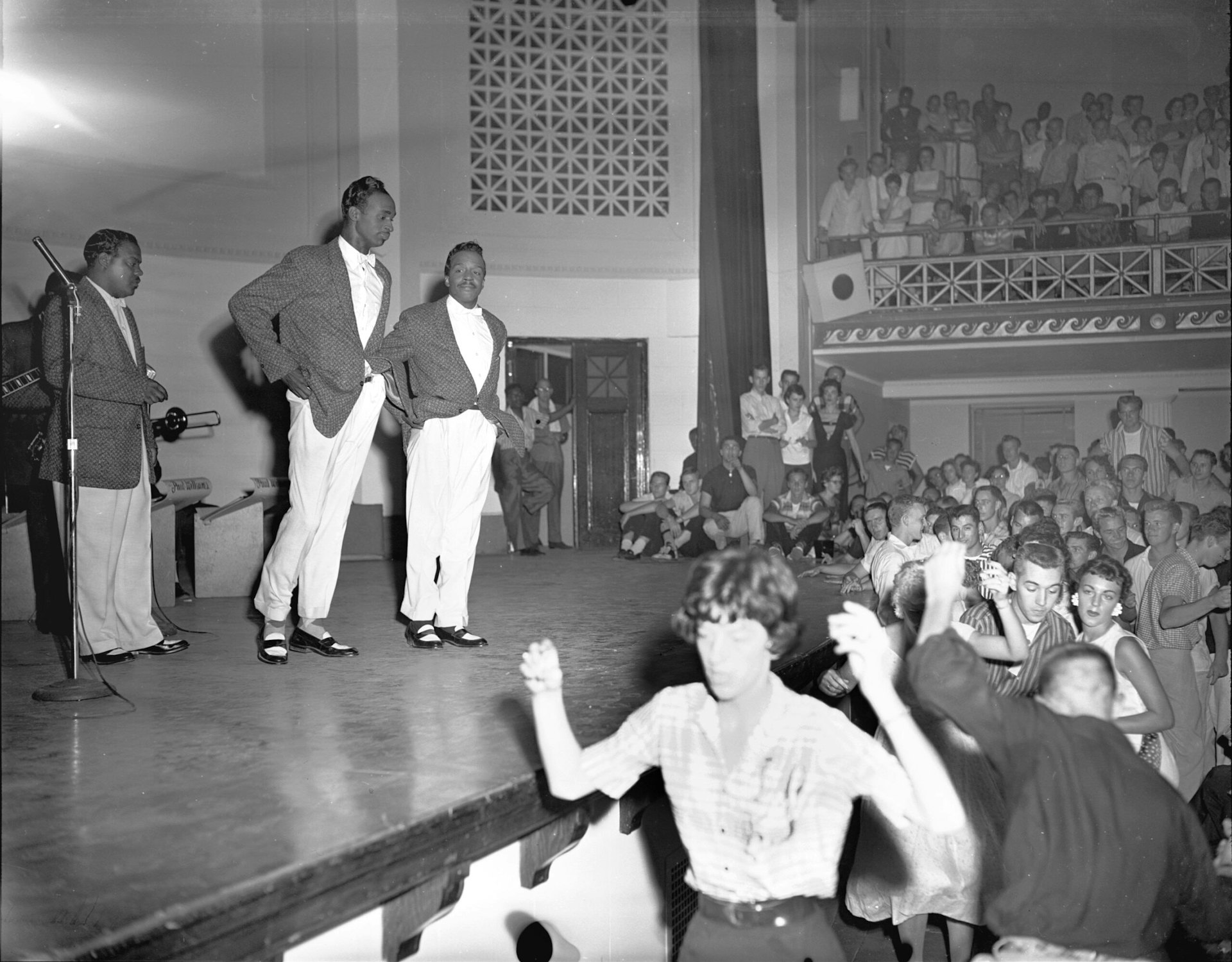
SEGREGATED SHOW TIMES
The Drifters (above) perform at Nashville’s War Memorial Auditorium in 1957. A newspaper blurb from the time (below) stated “the 7:30 performance will be for Negroes and the 9:30 performance for whites.” Photo by Elmer Williams.
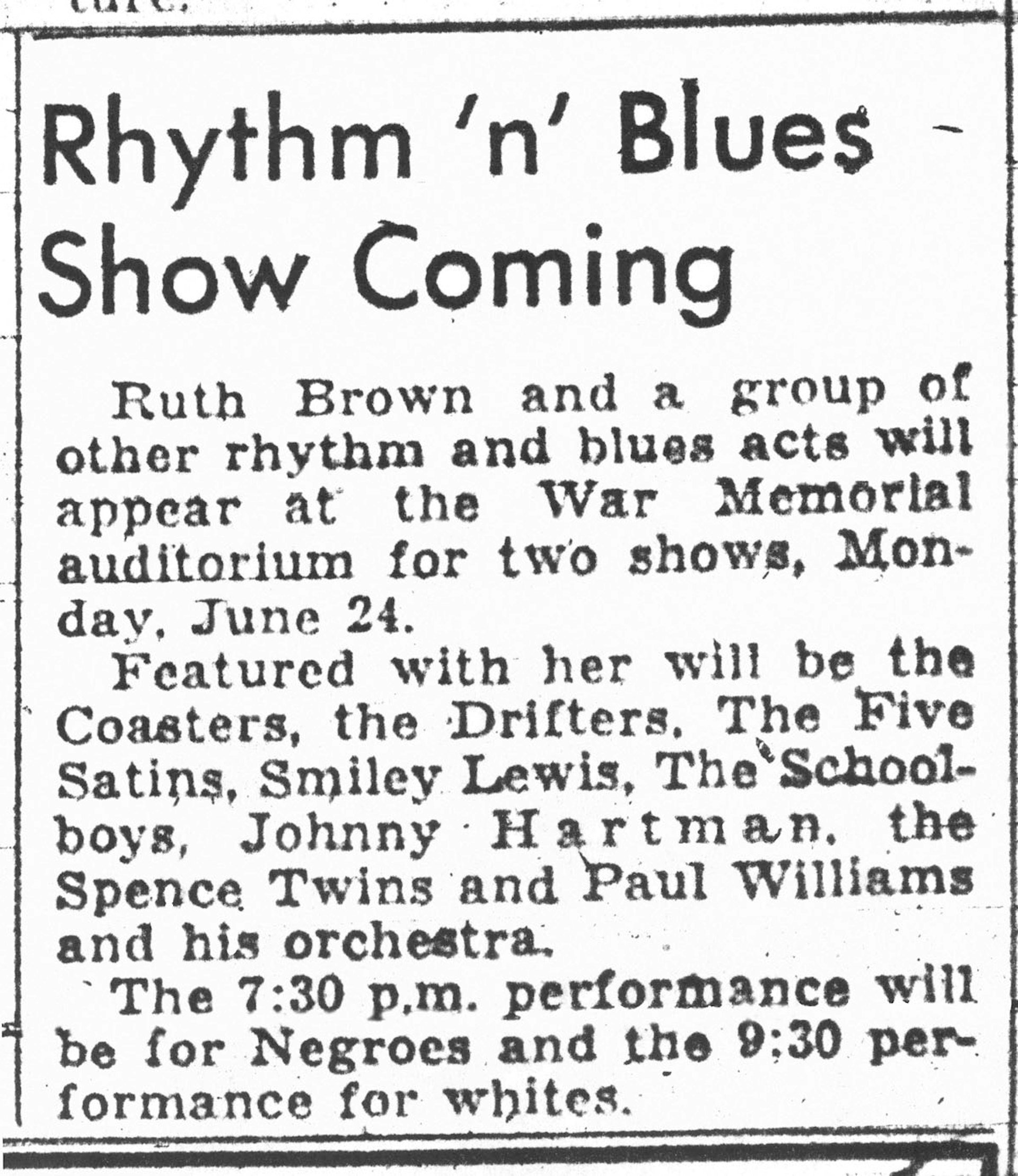
MAGIC GUITAR
In 1962, after completing military service at Fort Campbell, Kentucky, guitarist Jimi Hendrix and his friend, bassist Billy Cox, moved to Nashville. Drawn by the local R&B scene, they apprenticed in Printers Alley and in a long residency at Club Del Morocco on Jefferson Street, also a stopoff for celebrity athletes such as baseball great Jackie Robinson.
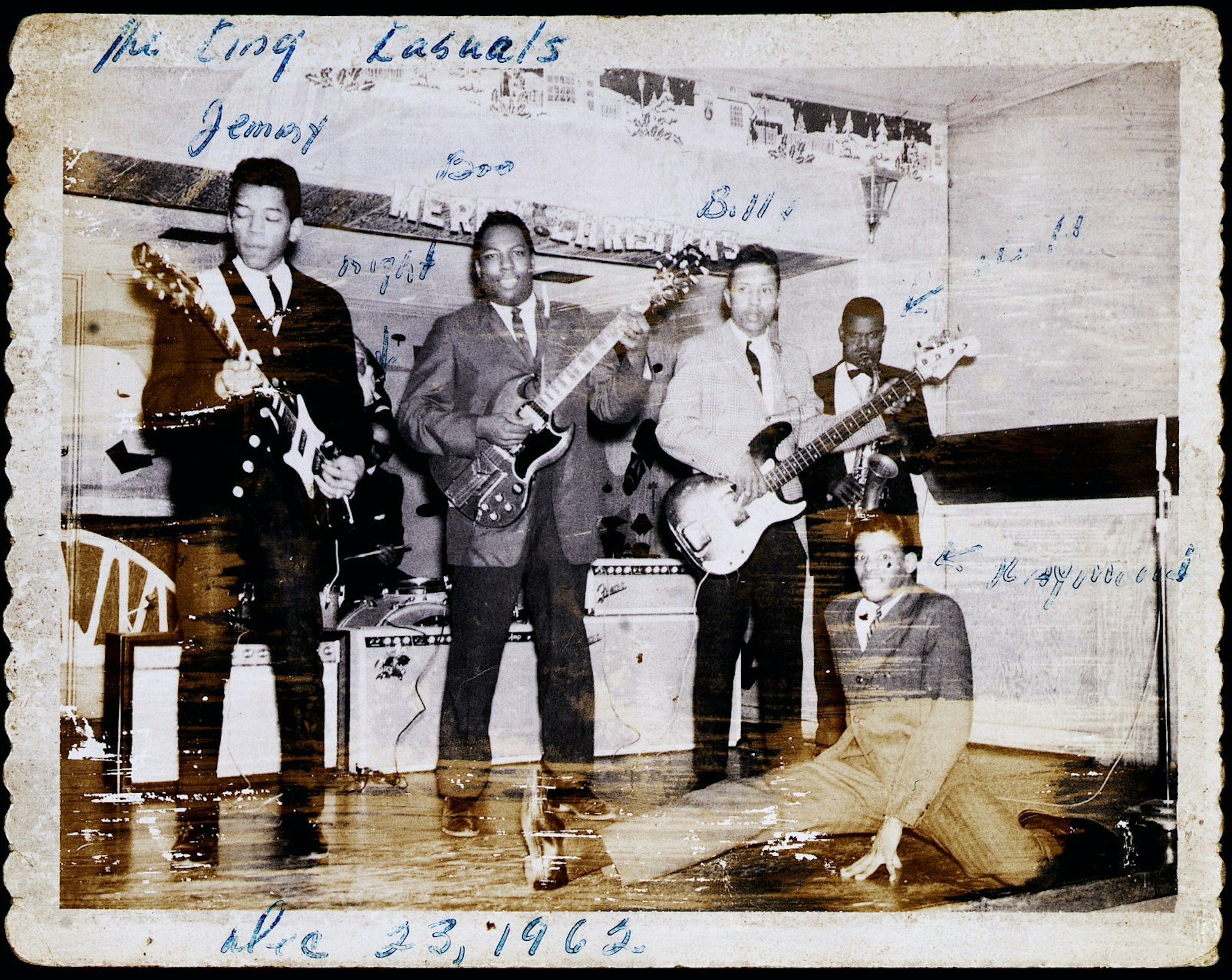
JIMI IN NASHVILLE
Jimi Hendrix and Billy Cox perform with the King Kasuals at Club Del Morocco, December 23, 1962. From left: Hendrix, an unidentified drummer, Alphonso Young, Cox, Buford Majors, and Raymond Belt (doing a split). A few months later, Cox and Hendrix appeared at the Jolly Roger in Printers Alley (below).

"That's where I learned to play really ... Nashville."
- Jimi Hendrix
JIMI AND BILLY
While learning their trade in Nashville, guitarist Jimi Hendrix and bassist Billy Cox practiced at home through this Gibson amplifier (left), which Cox rigged so they could play together. During these practice sessions, they originated songs they later recorded, such as “Freedom” and “Dolly Dagger.”
Courtesy of Billy Cox.
Courtesy of Billy Cox.
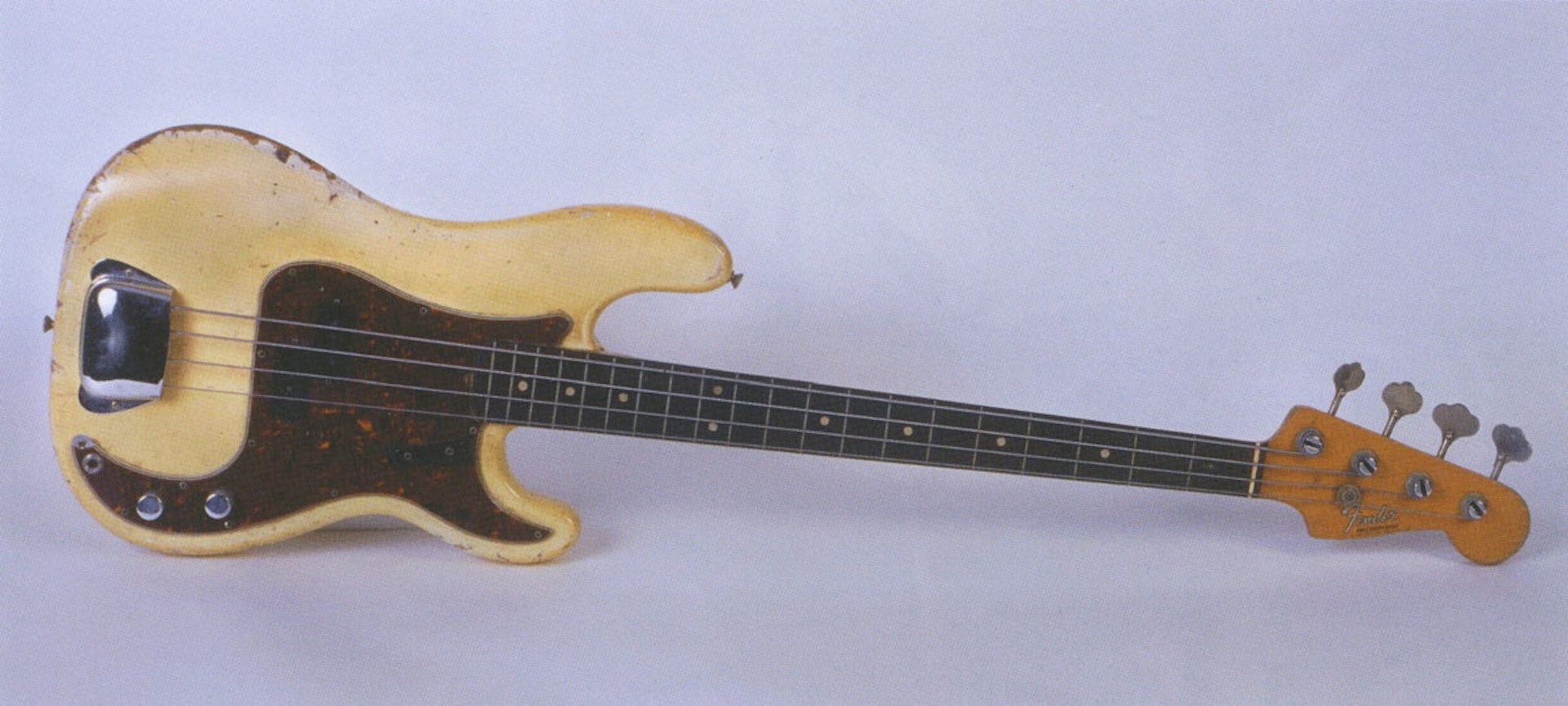
In addition to working with Jimi Hendrix, Billy Cox played this 1962 Fender bass on many Nashville R&B sessions and also in the house band on Night Train and The!!!!Beat. Courtesy of Billy Cox.
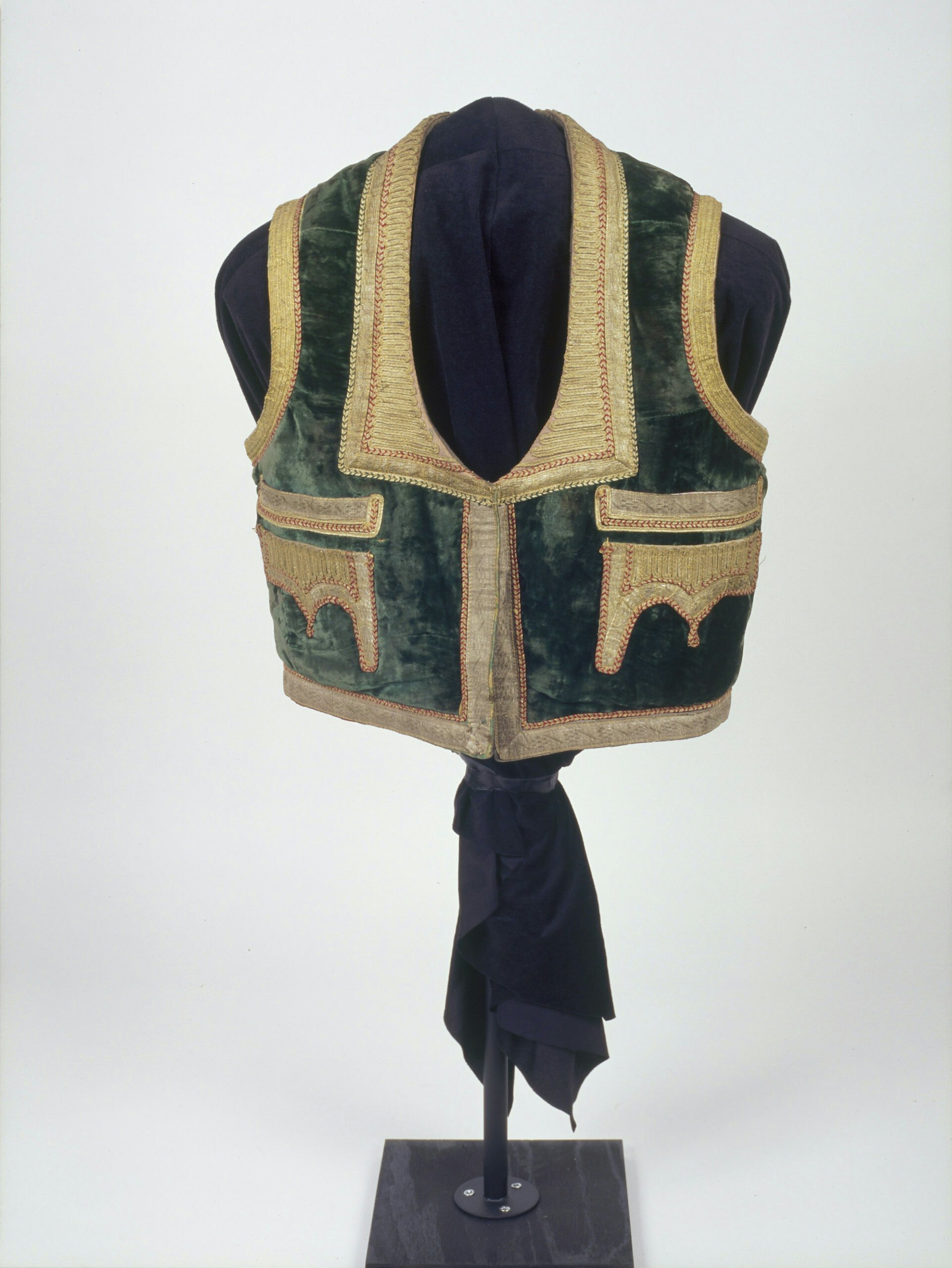
This vest belonged to Jimi Hendrix during his star years. Courtesy of Billy Cox.

Frank Howard & The Commanders toast the 1964 release of their first record, "Just Like Him". Courtesy of Frank Howard.
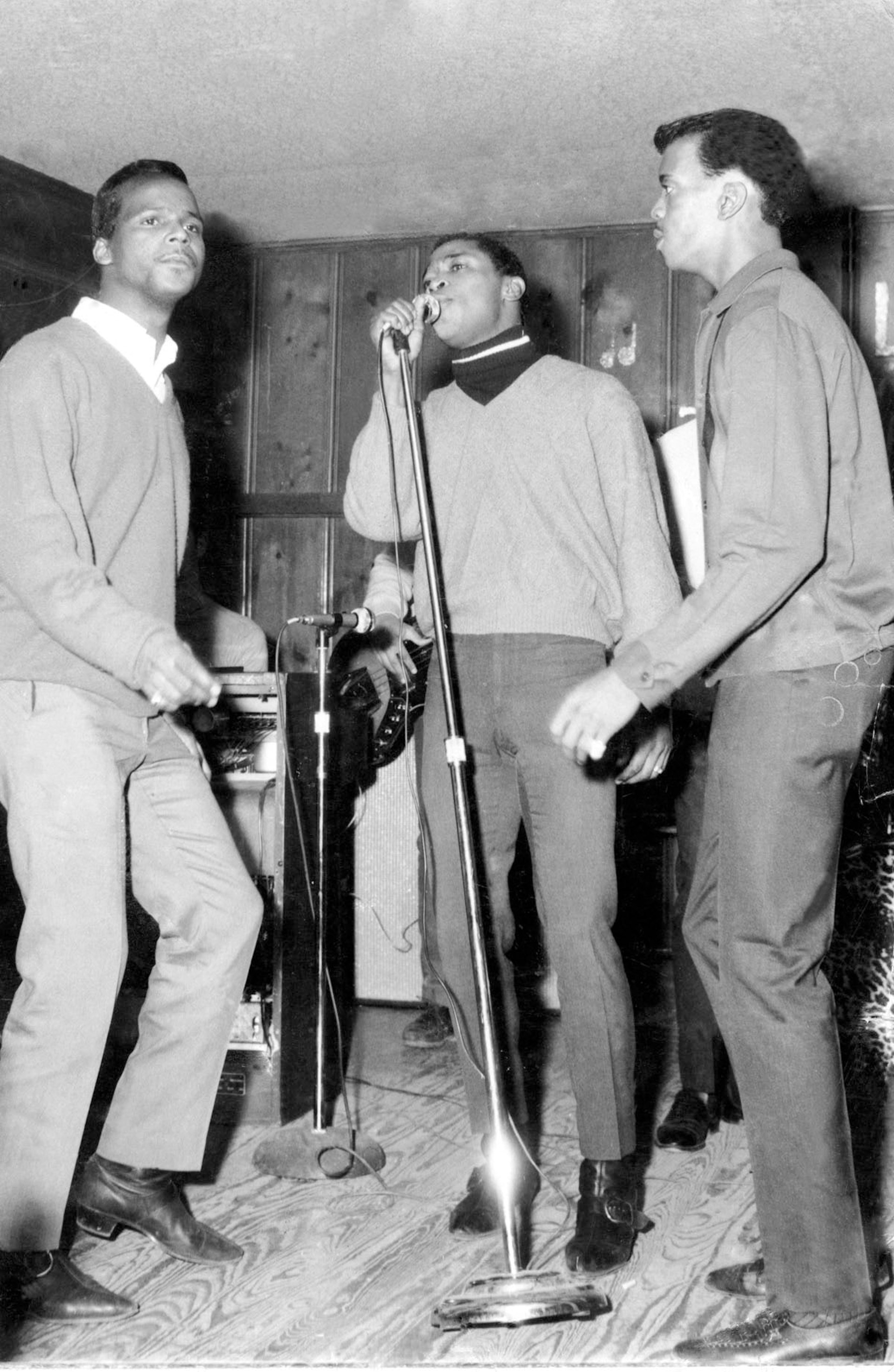
Frank Howard & The Commanders (From left: Charlie Fite, Frank Howard, Herschel Carter) at Club Stealaway. Courtesy of Frank Howard.
HOUSE ACTS
Many of the Nashville R&B clubs featured house acts who might play on a weekly basis for months or years on end when not performing out of town. Indeed, theirs is a street-level story of fame and musical impact rarely reflected in the charts and record sales to which music history is often reduced. Earl Gaines held forth at Nashville’s Sugar Hill, for instance, while at Club Stealaway the vocal trio Frank Howard & the Commanders sang Wednesday nights from nine until one in the morning.

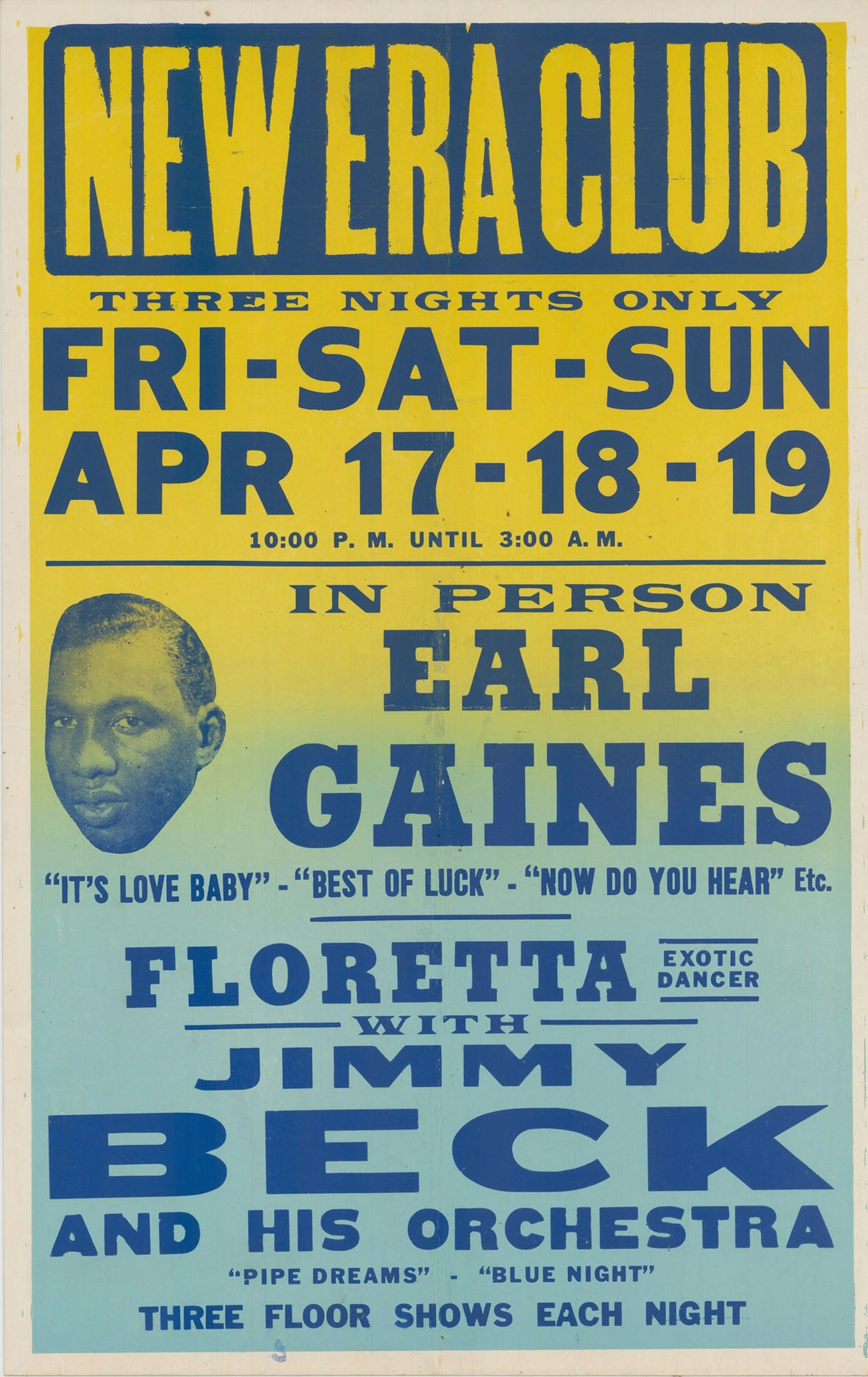
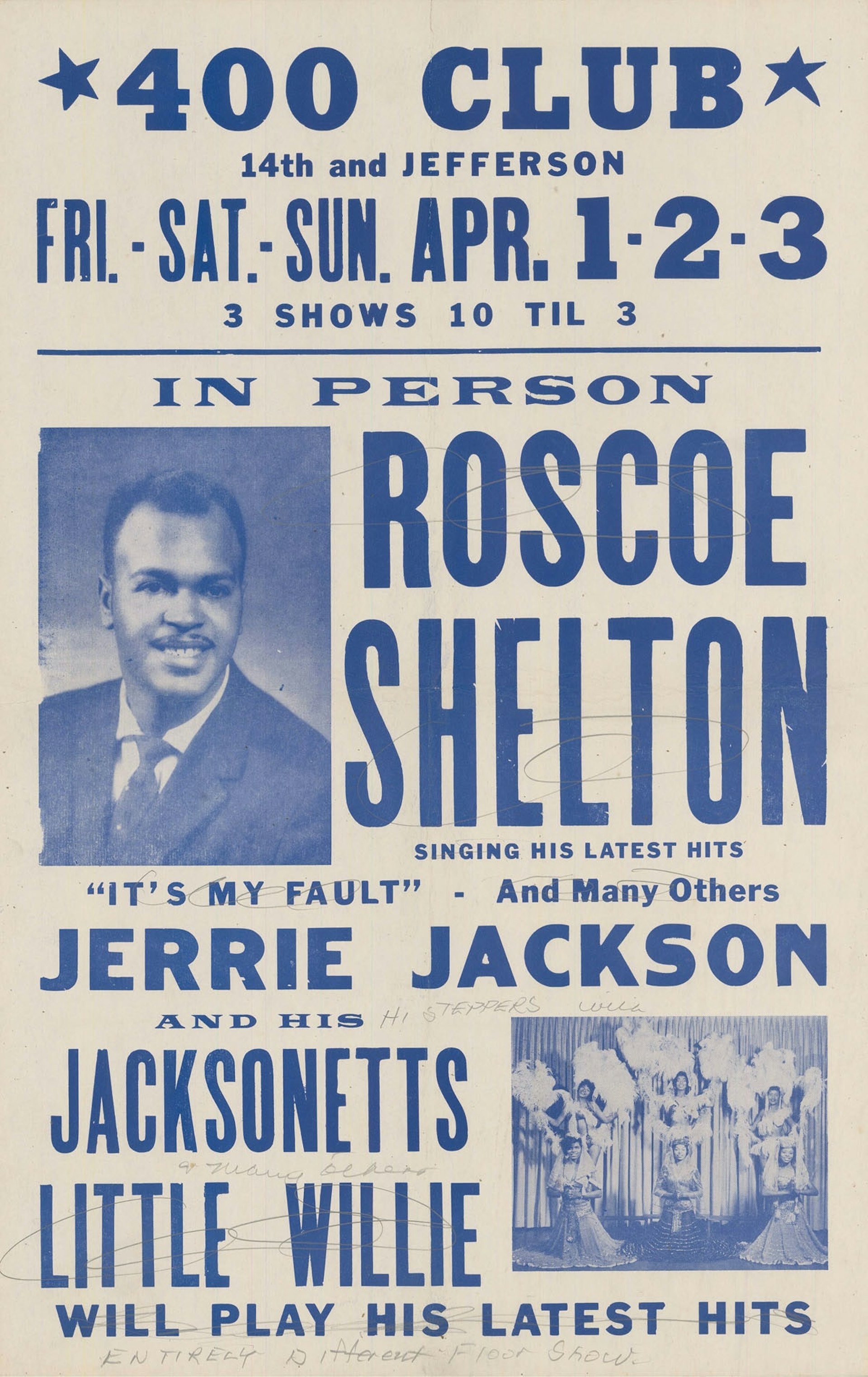
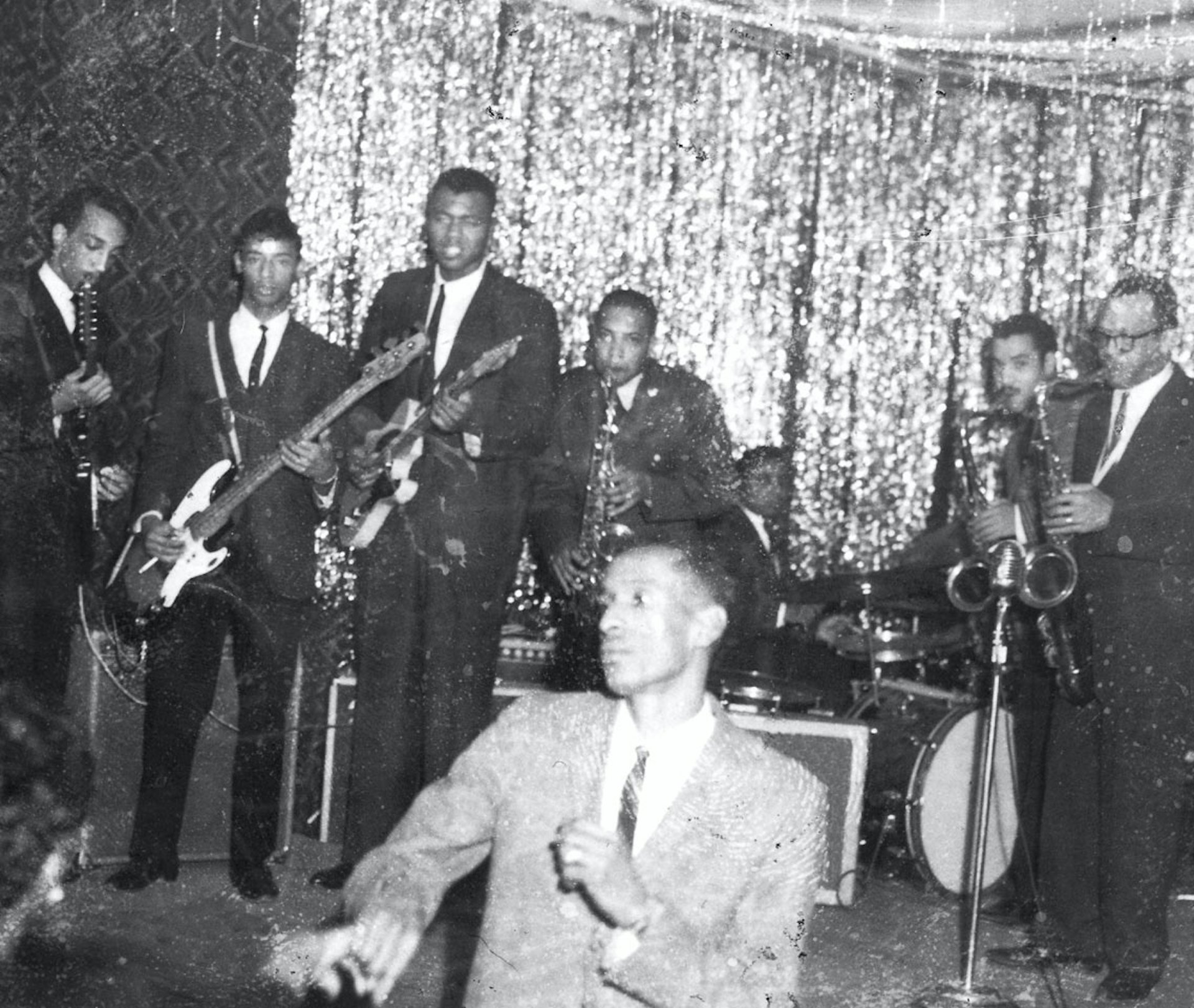
The Imperials, New Era Club, early 1960s. Courtesy of George Yates.
The Imperials held court at Nashville’s New Era Club throughout much of the 1960s. They were a major force on the local R&B scene, but released no studio recordings. Running his own tape recorder on the bandstand, Imperials guitarist George Yates captured the group in action at the New Era Club sometime around 1962, providing an audio snapshot of a typical night at one of the South’s leading Black nightclubs. The band’s personnel changed over the years. Appearing on this performance are Yates, Johnny Jones, Freeman Brown, James Watkins, John Green, and Red McMillan. “Lucky Lou,” the group’s most requested number, was written and originally recorded in 1957 by Chess blues artist Jody Williams.
BLOWING THROUGH TOWN
Centrally located in the heart of the mid-South, Nashville saw virtually every major R&B act of the time step across its stages. Whether it was the Club Baron on Jefferson Street, the old Sulphur Dell baseball park, or the New Era Club, out-of-town acts generally found a ready, raucous audience in Music City. Etta James recorded this live album (left) at Nashville’s New Era Club in 1963. According to her producer, the Nashville venue was chosen “because of the atmosphere generated by the public who patronize this club.”
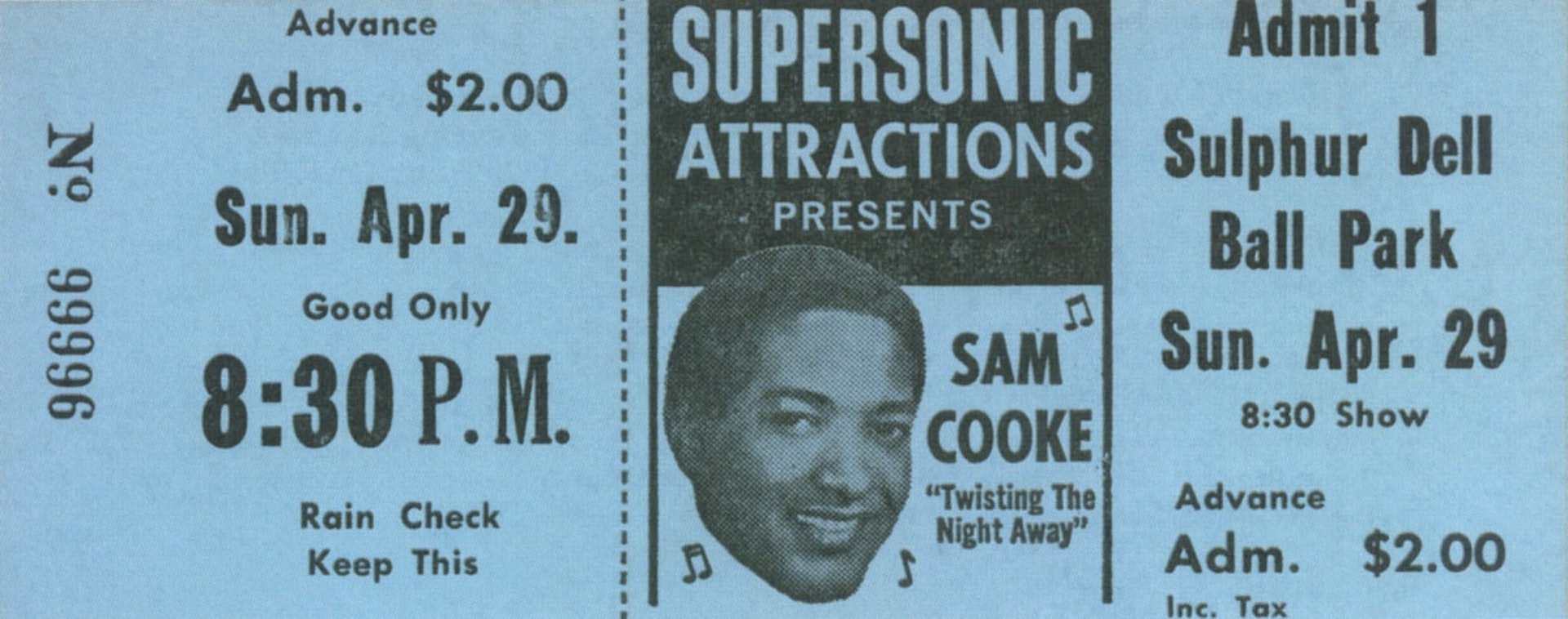
R&B great Sam Cooke was in his prime when this ticket for a Nashville show was printed.
RHYTHM KINGS
One of many Memphis musicians drawn to Nashville to study at Tennessee State University (Tennessee A&I), saxophonist Hank Crawford led an R&B group called Little Hank & The Rhythm Kings that often played the Subway Lounge in Printers Alley. After Ray Charles hired Crawford, the saxophonist’s first return trip to Nashville with Charles’s band was for the gig pictured below at local venue Maceo’s.
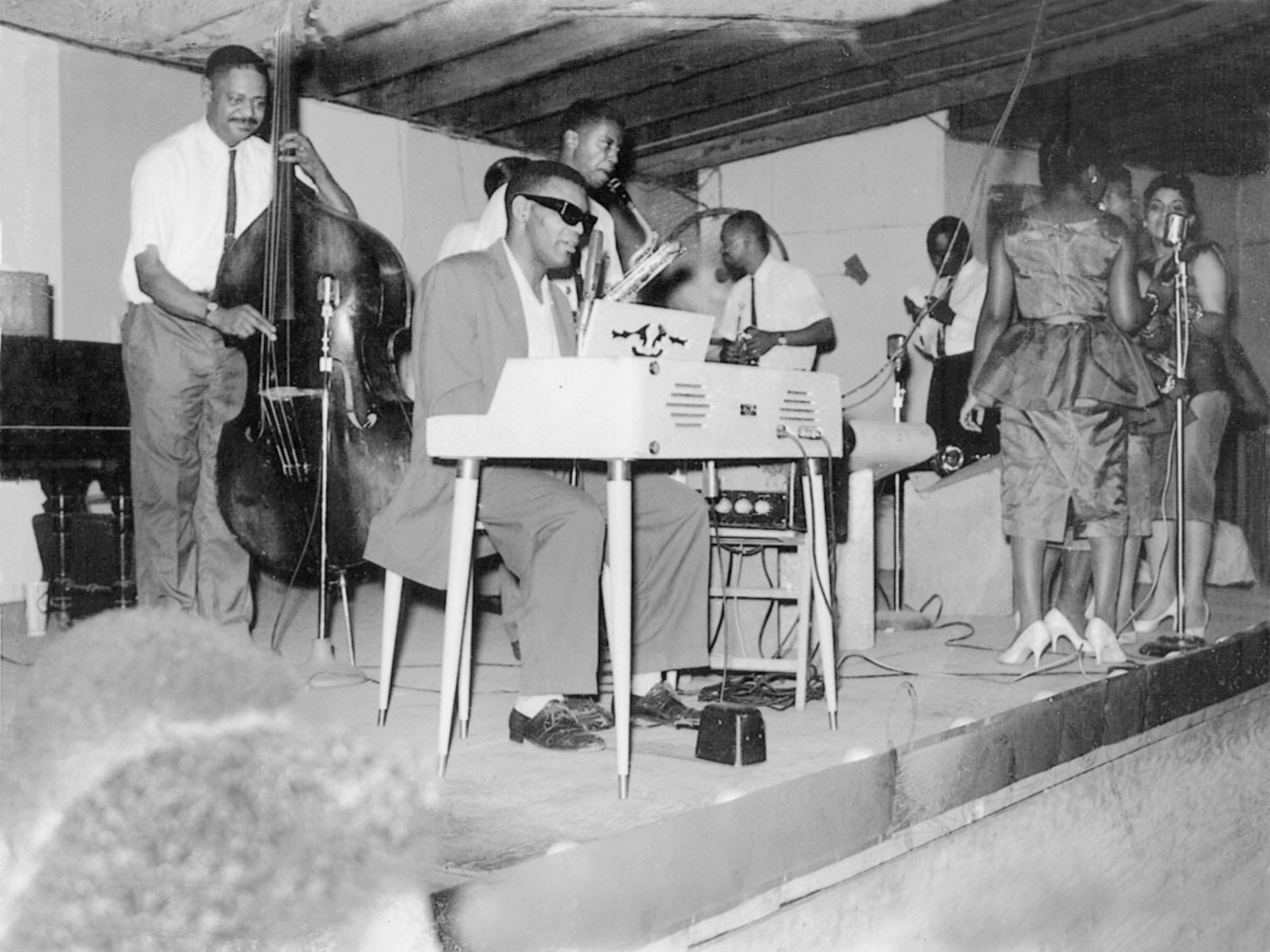
(Left) Ray Charles and band at Maceo's in Nashville, c. 1959: (from left) Edgar Willis, Ray Charles, Milt Turner (obscured), David "Fathead" Newman, Hank Crawford (looking back), Marcus Belgrave, the Raelets (Margie Hendrix, Pat Lyles, Gwendolyn Berry, Darlene McCrae). Courtesy of Larry Taylor.
"Nashville holds a dear place in my heart .... Ray Charles asked me to join his band after hearing me there. A lot happened for me during that time."
- Hank Crawford
SUBWAY LOUNGE TO STARDOM
After leaving Ray Charles’s group in 1963, Hank Crawford led his own jazz outfit, which utilized matching, hand-painted bandstands including the one shown to the left.
Courtesy of Hank Crawford.
Courtesy of Hank Crawford.

Spin the Record


